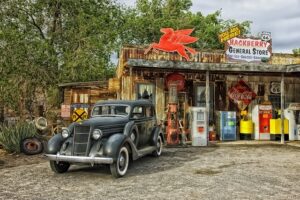Introduction
When it comes to operating and maintaining a snowblower, understanding its various components is essential. One crucial part of a snowblower’s engine is the carburetor. In this article, we will explore the location of the carburetor on a snowblower and provide you with a comprehensive understanding of its placement.
The Carburetor: An Overview
Before delving into the location of the carburetor, it is important to understand its purpose and function. The carburetor is responsible for mixing air and fuel in the correct ratio before it enters the engine’s combustion chamber. This mixture is essential for the engine to run smoothly and efficiently.
Locating the Carburetor on a Snowblower
The carburetor on a snowblower is typically located near the engine. However, the exact position can vary depending on the make and model of the snowblower. In most cases, you can find the carburetor by following these steps:
1. Start by locating the engine on your snowblower. The engine is usually positioned on the top or front of the machine, depending on the design.
2. Once you have located the engine, look for a metal or plastic cover that protects the carburetor. This cover is often held in place by screws or clips.
3. Carefully remove the cover using the appropriate tools. Take note of the screws or clips’ positions to ensure you can reassemble the cover correctly later.
4. With the cover removed, you should be able to see the carburetor. It is a small, metallic device with various components, including a fuel bowl, throttle plate, and choke.
5. Take a moment to familiarize yourself with the carburetor’s components and their functions. This knowledge can be helpful when troubleshooting or performing maintenance tasks.
Troubleshooting and Maintenance
Understanding the location of the carburetor is crucial for troubleshooting and maintenance purposes. If you are experiencing issues with your snowblower’s engine, the carburetor may be a potential culprit. Some common problems associated with the carburetor include clogs, fuel leaks, and improper fuel-air mixture.
Regular maintenance of the carburetor is also essential to keep your snowblower running smoothly. This includes cleaning the carburetor, inspecting for any signs of damage or wear, and adjusting the fuel-air mixture if necessary. Always refer to the manufacturer’s instructions or consult a professional if you are unsure about performing these tasks.
Conclusion
The carburetor on a snowblower plays a vital role in the engine’s performance. By understanding its location and function, you can effectively troubleshoot and maintain your snowblower. Remember to refer to the manufacturer’s instructions and seek professional assistance if needed.
References
– snowblowersdirect.com
– snowblowerforum.com
– homedepot.com












